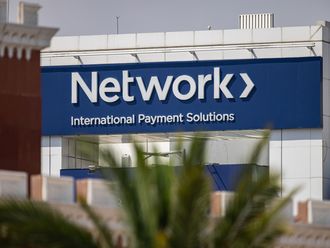Dubai: The global sukuk market will continue to rebound from a sharp drop in volumes in 2015, supported by a range of factors, including rising sovereign issuance, product innovation, increasing demand from retail banks and a narrowing of spreads over conventional bonds, according to Moody’s Investors Service
Moody’s analysts estimate that total sukuk issuance will reach around $95 billion by the end of this year, after more than $85 billion in 2016, including more than $50 billion (Dh348.8 billion) of sukuk issuance by sovereigns.
“Sovereigns have underpinned a recovery in the global sukuk market this year, with their issuance increasing by 50 per cent in the first eight months of 2017. We expect sovereign sukuk issuance volumes will continue to grow in 2018 as governments look to diversify their financing mix and satisfy the liquidity needs of Islamic retail banks.” said Christian de Guzman, a Moody’s Vice-President and Senior Credit Officer.
While total sukuk offerings in 2017 will remain below their peak level of close to $150 billion in 2012 despite two years of strong increases, sovereign sukuk issuance is set to reach record levels this year. “We estimate that sovereigns, including government-related entities and supranational organisations, issued more than $40 billion of sukuk in the first eight months of the year, or 71 per cent of total long-term sukuk issuance volumes. This represents a 50 per cent increase compared to the same period last year and exceeds the volume of sovereign long-term funds raised in the whole of 2016,” said Guzman.
A number of factors will support sovereign sukuk issuance, including high borrowing needs for GCC sovereigns, which Moody’s expects to reach around $148 billion in 2018. GCC countries drove the market’s growth in 2017 with Saudi Arabia raising the lion’s share of sukuk during the year to a total of $17 billion. Other countries with large fiscal deficits, such as Oman and Bahrain — estimated at 11.9 per cent and 13.4 per cent of GDP in 2017 respectively — will also contribute to the market’s expansion.
With many sovereigns front-loading their issuance earlier this year, analyst expect sovereign sukuk issuance to flatten in the reminder of the year. However the overall sovereign issuance for full-year 2017 is expected to exceed $50 billion, a significant increase compared to an average of $36 billion between 2013 and 2016.
By contrast, corporate issuance (including financial institutions) dropped this year. As a result, the corporates’ share of total (long-term) sukuk issuance shrunk to less than 30 per cent.
Other factors contributing to higher sovereign sukuk issuance include demand from domestic banks, and product innovation that will help address two fundamental challenges faced by the issuers: the lack of physical assets for structuring sukuk and the prohibition from transferring asset ownership to special purpose vehicles (SPVs) under some jurisdictions. Narrowing of spreads over conventional bonds will also contribute to sukuk issuance.
Despite Malaysia’s falling share of sovereign sukuk issuance, it remains the largest sukuk market with an estimated 43 per cent of total sovereign sukuk outstanding in 2016. Indonesia’s share in annual sukuk issuance has increased to 30 per cent in 2016 and will likely grow with the government’s efforts to develop the Islamic finance sector.
Although the number of new entrants into the sukuk market has declined since 2014, Nigeria issued its first sukuk this year and a number of sovereigns have indicated that they intend to take advantage of the asset-based nature of sukuk financing to finance their sizeable infrastructure needs, including Niger Kenya, Ghana, Morocco, Tunisia and Algeria.










